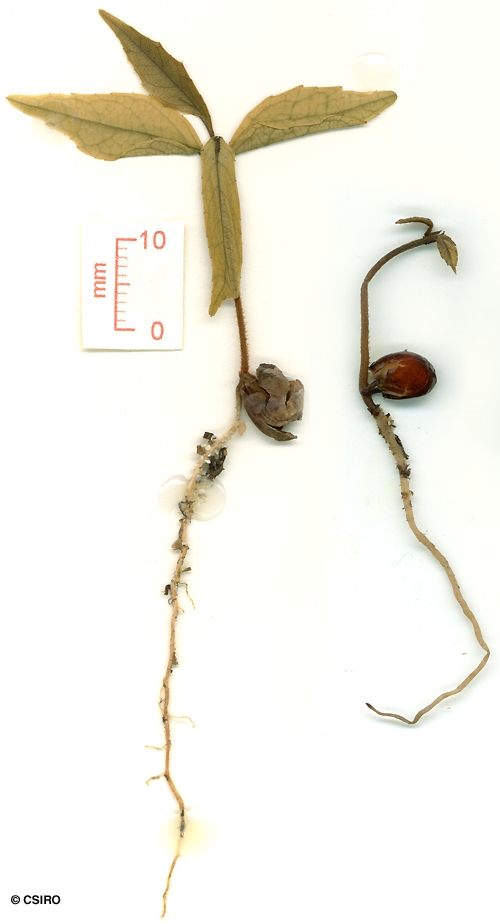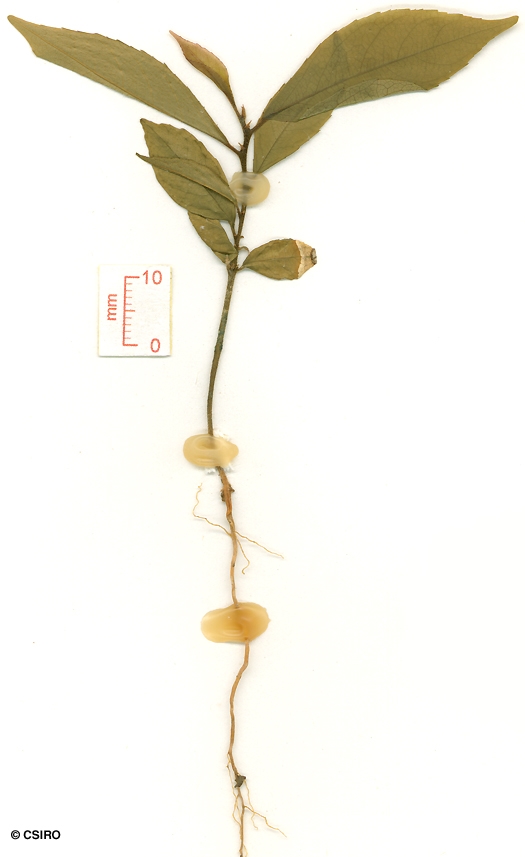Australian Tropical Rainforest Plants - Online edition
Schistocarpaea johnsonii F.Muell.





Mueller, F.J.H. von (1890) The Victorian Naturalist 7: 183. Type: On Mount Bartle-Frere; Stephen Johnson.
Johnson's Almond
Seldom exceeding 30 cm dbh. Faint sarsaparilla or liniment odour in the blaze.
Inflorescence shorter than the leaves. Calyx lobes about 3 mm long. Petals clawed, about 2.5 mm long. Stamens enveloped in the petals, anther filaments about 2 mm long, inserted outside the crenate disk.
Fruits 3-lobed, +/- turbinate, about 8 x 10 mm, lower part marked by persistent remnants of the calyx tube (hypanthium). Seeds +/- obovoid, about 7 x 4.5 mm. Cotyledons thick and fleshy.
Endemic to NEQ, restricted to the area between Cooktown and Innisfail and the southern end of the Atherton Tableland. Altitudinal range from 100-1100 m. Grows as an understory tree in well developed rain forest on a variety of sites.
Fruit eaten by King Parrots. Cooper & Cooper (1994).





